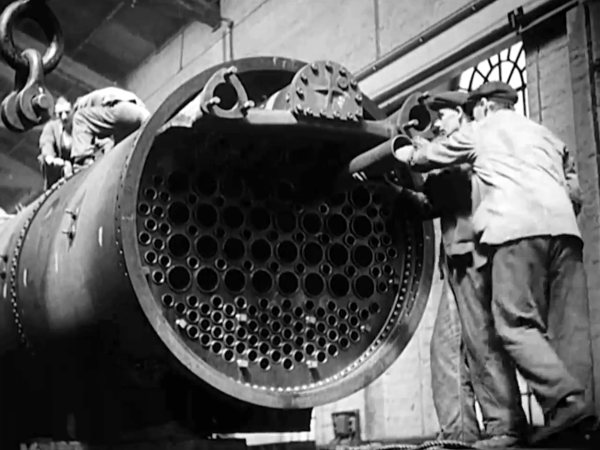Here’s a fascinating look at high-tech manufacturing in the 1930’s. This week’s Retrotechtacular features the building of a steam-powered locomotive. The quality of the black and white footage, and the audio accompanying it are almost as impressive as the subject material — which is nothing short of a machinist’s wet-dream but also includes much forging and smithing. Digging through the video for a suitable still image was a tough task, as every step in the process was interesting to us. But this image showing some of the 2700 feet of tubing used in the locomotive seems most appropriate.
The build covers all aspects of the build. Huge sheets of steel make up two side plates between which the cast engine block is mounted. The mold for casting was huge, required twelve hours dry time before the pour, and took a day or two to cool before breaking the mold. That yielded a rough block which then headed off for machining.
We were delighted by the crane used to transport steel sheets from the oven to a stamping machine. The counterweight is workers (and lots of them) on the other side of the fulcrum. After a glimpse of the ancillary part fabrication you begin to get a look at the complexity of the machine as it is assembled.
Does anyone feel a deep appreciation for the pedagogy that went into making something like this? What we mean is that the teams building No. 6207 don’t seem to be using skills learned in a book or from a class, but rather those passed down from the masters that have been on the job most of their lives. Watching them all work is nothing short of astounding!
Continue reading “Retrotechtacular: Steam Locomotive Construction In The 1930’s”



















